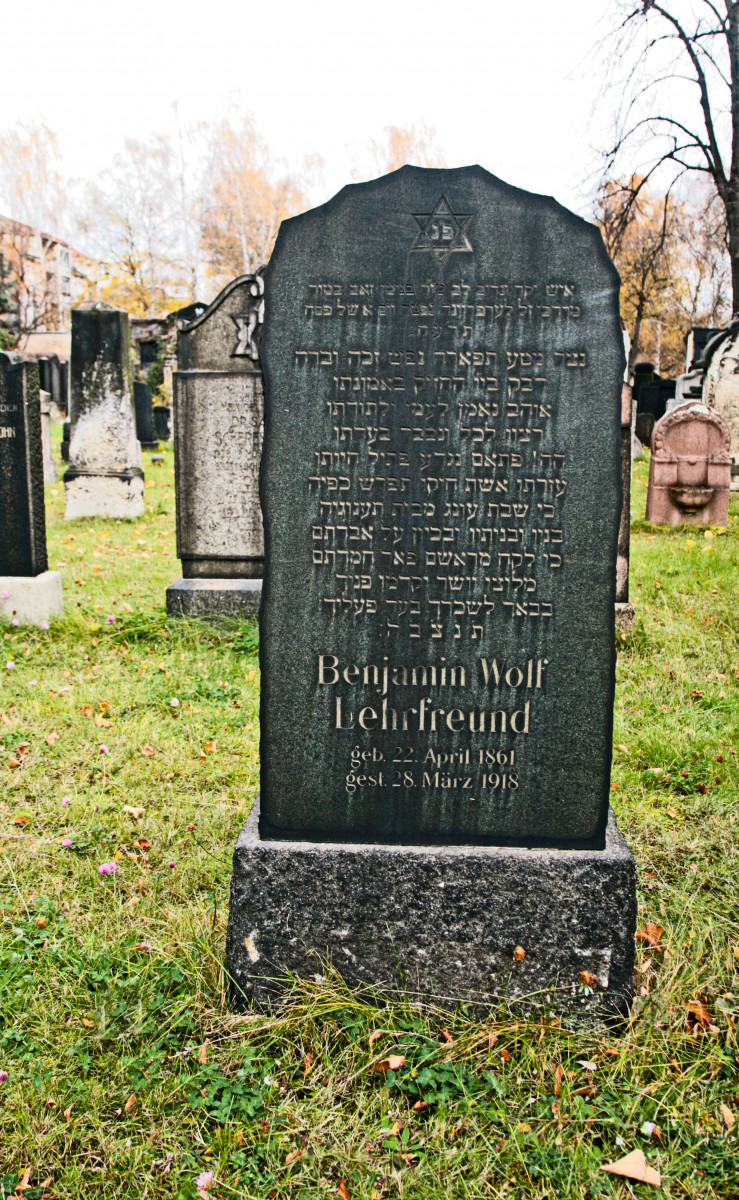
Lehrfreund, Benjamin / Benjamin Wolf
Lehrfreund
Benjamin
–
Apr 23, 1860
Krakau
Mar 28, 1918
Leipzig
–
321
234a
–
Benjamin Wolf
–
Apr 22, 1861
–
–
–
–
Yes
Yes
Stone
Position of the Headstone
I
left
12
–
9
6
–
–
–
–

Vorn
hebrew , german
gut
Hier ist begraben ein teuerer Mann, großzügigen Herzens, unser Lehrer, Herr Benjamin Wolf, Sohn unseres Lehrers, des Herrn Mordechai, sein Andenken zum Segen, Lehrfreund, verschieden am ersten Tage von Pesach [5]678, Sproß einer prächtigen Pflanzung, eine reine und klare Seele, hingt dem DER NAME an, hielt Treue, der Sein Volk und Seiner Lehre/Tora treu liebt, bei allen wohlgelitten, und verehrt in S/seiner Gemeinde. Oh! plötzlich wurde der Faden seines Lebens abgeschnitten. Seine Gehilfin, die Frau seines Schoßes, breitet ihre Hände aus, denn das Vergnügen hat aufgehört in ihrem vergnüglichen Heim; seine Söhne und seine Töchter weinen über ihren Verlust, denn von ihrem Haupt genommen ist ihr schöner Schmuck. Fürsprecher kommen dir zuvor, wenn du zum Lohne für dein Werk gelangst: Deine Seele sei eingebunden in das Bündel des Lebens.
Den Text verfasste Samuel Joseph Agnon, er erhielt 1966 als erster hebräischer Schriftsteller zusammen mit Nelly Sachs den Literaturnobelpreis.
Den Text verfasste Samuel Joseph Agnon, er erhielt 1966 als erster hebräischer Schriftsteller zusammen mit Nelly Sachs den Literaturnobelpreis.